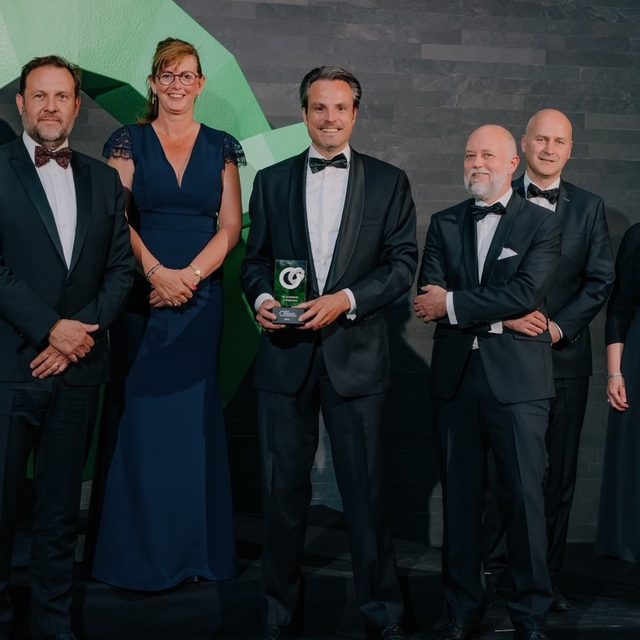
Retrofitting for a promising future
About
Re-use is a cornerstone of sustainable development. With re-use come alterations, improvements, upgrades, as a given item can rarely be re-used asis. In case of buildings, this retrofitting comes with very specific challenges and opportunities, technical risks and constraints that can significantly impact the business case for retrofitting. It is essential to address these risks early on in the design process and approach them from an integrated perspective involving design, engineering, the expectations of local and regional authorities, the needs of end-users and the wishes of investors.
By 2050, 80% of the existing built environment will require a major overhaul to meet energy-efficiency standards.
Bart Brink
director team digital, VK architects+engineers
Retrofit and upgrading: the challenge
Market demands have always changed, due to shifts in functionality and end user requirements. However, recently, the strong increase in additional regulatory demands regarding energy and circularity confront the existing built environment with a major new challenge. By 2050, 80% of the existing built environment will require a major overhaul to meet energy-efficiency standards.
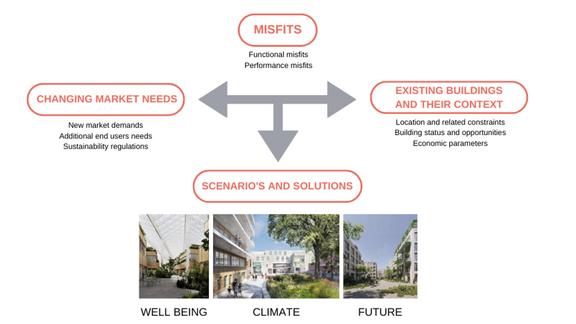
From this misfit between existing supply and demand resultsaneedforretrofitting. Primarily focused on performance but also taking it one step further, where a change in function is required to create new value for the location. A business case for retrofitting is less straightforward than a greenfield development: apart from any compliance with contemporary requirements on energy and attractiveness for users, an existing building might be subject to specific regulations (heritage status?) and very likely is part of an existing urban structure. All of which impact the technical feasibility for a retrofit.
Because there is more to the existing built environment than buildings. It also is part of a fine granular integrated system, consisting amongst others of city-wide energy systems, water collection and related sewer systems, and mobility and logistics related to roads, parking, and public transport. This setup of structures, materials, and systems, besides a large potential inevitably holds challenges and, from an economic perspective, constraints when thinking of book values of assets.
To solve this challenge, at VK architects+engineers we continuously aim for the most optimal solution from three perspectives.
- Well-being for users, society and the surroundings: how do we create a work or living environment that keeps us healthy or even makes us healthier? We need to aim for buildings that closely align with our natural environments
- Climate-friendliness, focussing on a positive environmental impact, going further than aiming for zero.
- Climate and market proof, making the built environment resilient to change – whether to a change of climate or of economic perspective.
The complex challenge with retrofitting is for the given context to combine the right solutions into the right implementation strategy. In some cases, implementation happens in one big upgrade. In most cases, maintenance strategies need to be aligned with sustainability improvements for an efficient realisation and to minimize impact for users.
The key to success: combine integration, advanced expertise and digital mindset
As we have learned from this misfit and need for a clear implementation strategy, VK architects+engineers proposes to reinvent the retrofitting design approach. Changing this will help us to deal with the complexity of retrofits while realising climate and future-proof buildings that promote well-being.
This reinvented approach consists of three elements, with sustainability and digital innovation as key components.
First of all, we propose a more collaborative and integrated approach, where a core team of architect, sustainability coach and engineering lead work together from the start on an equal basis. This allows us to gain early insights into major impacts on the business case for retrofitting for various aspects, including functional, technical, and sustainable.
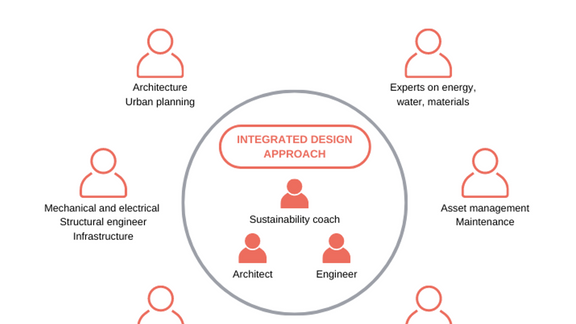
Secondly, this core team needs a wider community of experts than ever before. Alongside traditional expertise, specialists in sustainability and digital innovation are essential.
Finally, the core team and expert community need smart digital tools. We intently speak of an eco-system of digital tools, to be able to meet case-specific requirements and to keep up with technological development accelerating ever faster. So per case we continuously look for the best fit for purpose technology. Sometimes provided by us, often by leveraging a wider eco-system of partners
This eco-system of digital tools can speed up a number of intricate processes, typical for retrofit projects.
- Gaining fast and accurate insights into the existing situation, through Scan to BIM to Twin. This often happens from a geometric perspective and its related information, with a focus on scan to BIM only. But the operational and energy performance insights are just as important, by creating a virtual replica or digital twin of the existing situation. This enables us to generate baselines for the energy model, using generative AI when historical data is lacking, and by combining the skills of data scientists and energy experts.
- Exploring proper improvement scenarios in seconds by leveraging the potential of computational design techniques
- Validating improvement scenarios.
- Optimizing scenarios in roadmaps is essential: combining measures in a logical sequence, aligned with maintenance strategy, and creating databases to capture knowledge and insights.
- Communicating proposed upgrades and changes to stakeholders- users and authorities - leveraging the power of immersive experience
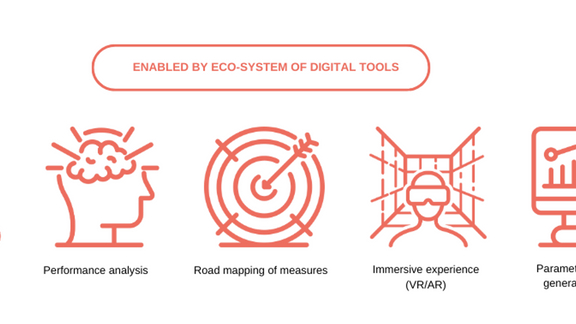
Full lifecycle partnership
At VK architects+engineers, we're committed to the well-being of people and planet. One way of showing this commitment, is by giving buildings a second lease of life. Our ambitions as a full lifecycle partner are fully in line with retrofitting existing buildings. The intricacies that come with these retrofitting challenges are met through our integrated design approach, combining the skills of multidisciplinary specialists. The recent merger with Sweco expands the access to relevant knowledge and experience. Working across sectors and regions, we maximize our learning and innovation.
With over 70 years of experience, VK is proud to have contributed to the retrofitting of valuable buildings and sites, such as Wintercircus, Academiestraat, Astoria Hotel, Hotel Van Eetvelde (UNESCO heritage), bozar (listed heritage), OXY/Centre Monnaie, ZIN and USquare.
With sustainability at the core of our business, we invest in the twin transition - where digital and green transitions come together - to create a future-proof built environment that is climate-neutral, promotes wellbeing at the human, community, and global scale, with a resilience towards market changes.
Here to stay.

Bart Brink - director team digital, VK architects+engineers
Other interesting articles

World Engineering Day for Sustainable Development is daily present at VK
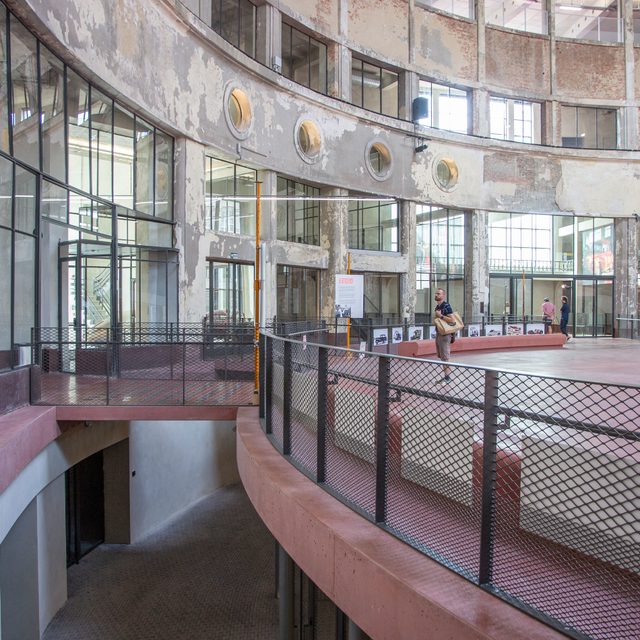
Discover the renovated Wintercircus
